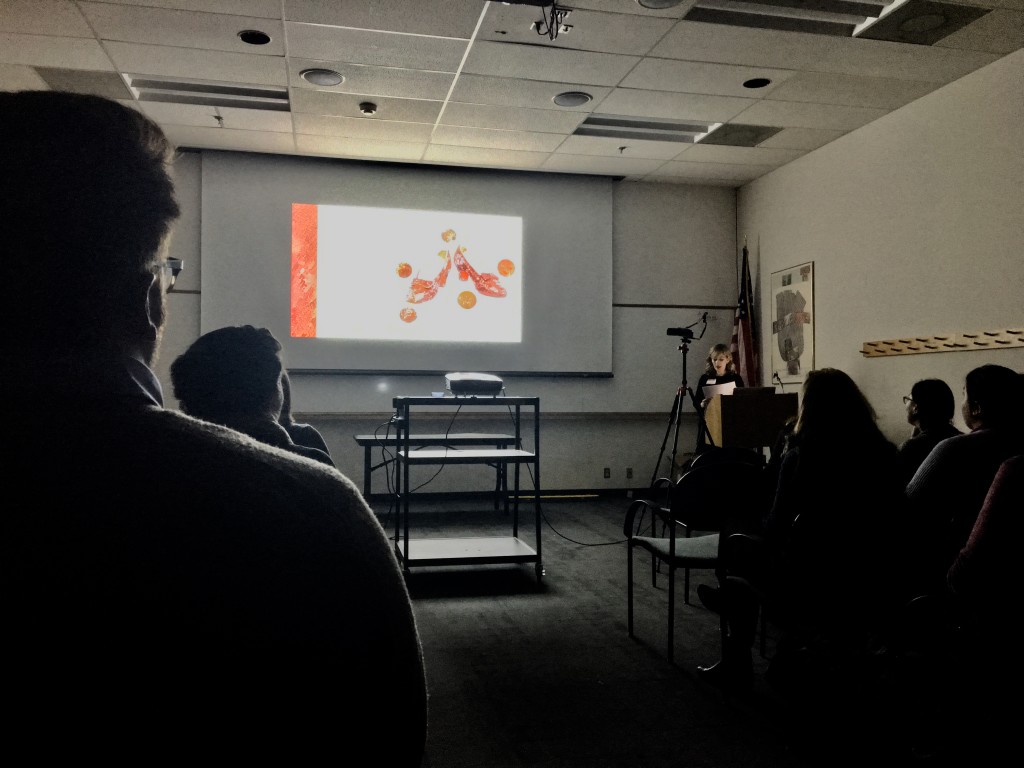In the Collaborating and Connecting Ring, Dawn Wallace, Objects Conservator, National Museum of American History, presented on her work with the ruby slippers. In the 1939 classic film, The Wizard of Oz, Dorothy Gale played by Judy Garland wore the iconic ruby slippers down the yellow brick road.

The slippers, silver in the original story by L. Frank Baum and illustrated by W. W. Denslow, were designed and created by Gilbert Adrian, the chief costume designer at the MGM Studios. They were made using commercially manufactured shoes, dyes, red netting, and sequins. The particular pair of slippers donated to the National Museum of American History in 1979—there were many pairs of slippers made—are thought to be used by Garland’s for dance sequences. As Adrian’s slippers were meant to only last through the filming and were, in fact, placed in storage for approximately thirty years and then in private ownership before they were donated to the museum, conservators understood the increasing fragility and deterioration of the materials (including but not limited to fading and flaking) over the thirty years when the slippers were on display. The conservators saw a need reasoned for an immediate and in-depth conservation care as well as a new, state-of-the-art display case to protect the iconic slippers from environmental harm. In order for the treatment to be completed for the new exhibition in 2018, the museum reached out to the public and launched #KeepThemRuby campaign in between October and November 2016. In the span of a month, 6451 dedicated fans managed to raise $349,026 to support the conservation of the slippers.
During the 3-Ring Circus held at the S. Dillon Ripley Center, objects conservator Dawn Wallace gave a brief overview of the different media outlets the immensely successful campaign utilized for project advocacy. She also spoke of the training she received and shared her personal recommendations for optimally and effectively communicating the conservation-related information to the public.
The presentation detailed issues and topics that Wallace and her colleagues had encountered throughout the campaign period, such as budgeting, justification of conservation of the slippers, and using specific language and vocabulary to translate conservation to the general public. Some difficult questions posed were: ‘What is conservation?’ ‘Why is so much money needed, and isn’t Smithsonian federally funded?’ ‘If the kickstarter is for future treatment, are you not doing anything to conserve the slippers right now?’ Wallace also shared her experience preparing for interviews on various platforms, ranging from pre-recorded and edited interviews recording to live discussion that were shared through TV, radio (NPR interview), social media (BBC Facebook), and American History blog posts. She provided tips including but not limited to practicing continuously; hold mock interviews and have your colleagues ask difficult questions; stop, smile, and give clear explanations during interviews; have interesting facts about the object prepared to fill in awkward pauses; and repeat the question in your answer of recorded interviews. Wallace also commented on the importance of following through after the campaign period by providing updates, blog posts, and videos of the project to ensure public engagement.
Throughout the presentation, Wallace reaffirmed the conservator’s capacity to make the field interesting and appealing to the general public and reiterated the importance of such publicity for the museum, its collections, and the field of conservation. The Ruby Slippers were removed for treatment on April 23, 2017. See the entry on the American History website to learn more.
See #KeepThemRuby Kickstarter website for relevant articles and up-to-date progress on the project, as well as their extended fundraiser for the conservation of the Scarecrow’s costume.
Summarized by Hae-Min Park, Graduate Intern in paintings conservation at the Walters Art Museum.